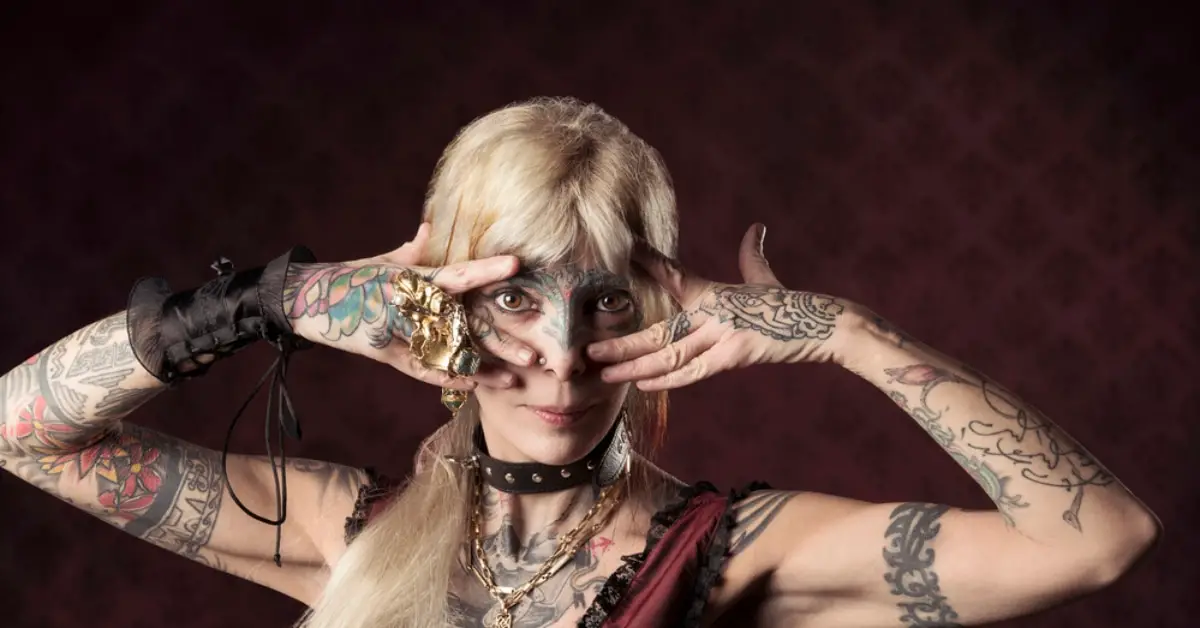Are you planning a new tribal tattoo? Getting a tribal tattoo design can be a truly magical experience as they have a hold within a unique and rich history.
Tribal tattoos have a long history and are well-known for their eye-catching and often complicated patterns. These designs are from different indigenous groups worldwide, each having its cultural meaning. Tattoos from the Maori of New Zealand to African tribes serve as works of beauty and carry significant meanings that frequently reflect strength, bravery, and connection to cultural heritage.

With a fascinating history, tattoos have been around for thousands of years, serving as everything from warrior symbols to official marks of a tribe.
But what do they mean? Why were they so important in almost every culture of human history? We’ll discuss the complicated meanings behind each intricate pattern and how it has changed with time. We’re here to reveal the secrets behind the art of tribal tattoos, from traditional to modern versions.
But first, let’s dive into the origin of these interesting ink patterns and where they come from.
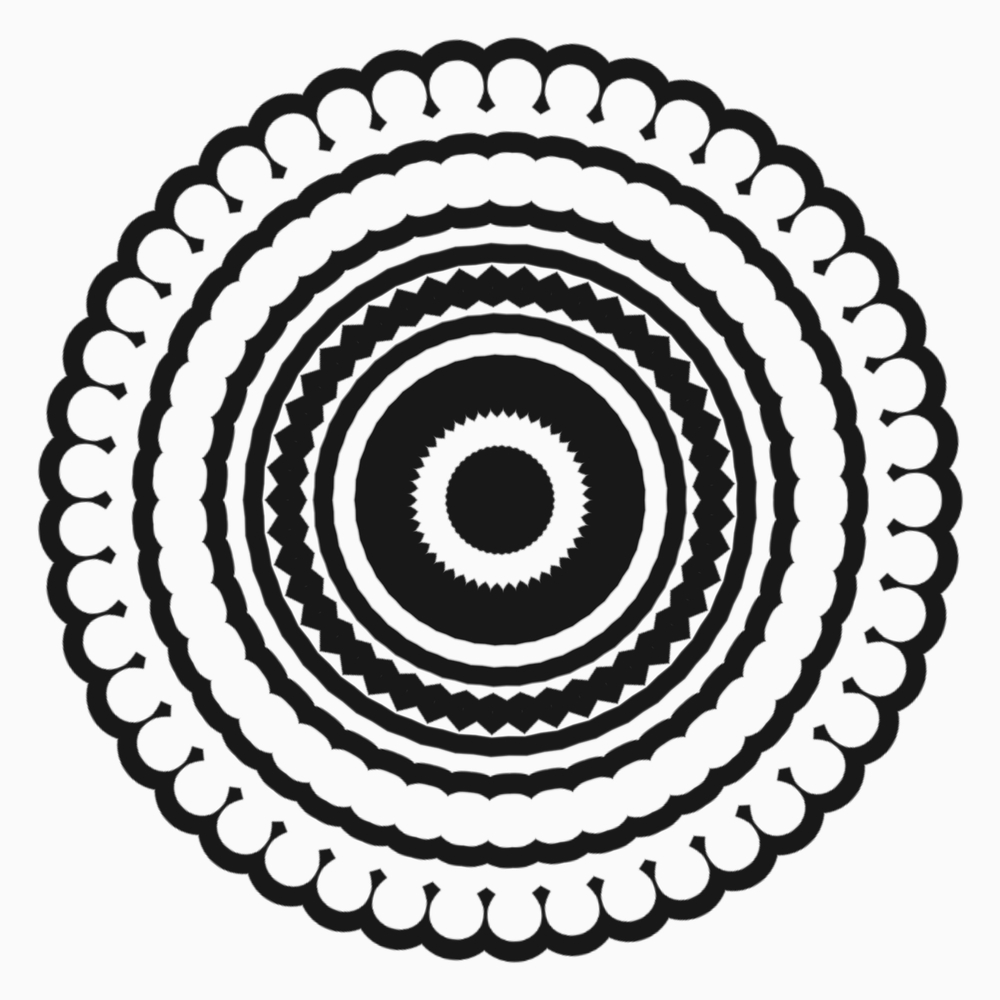
Origins of Tribal Tattoos
Tribal tattoos are more than just geometric patterns on the skin; they are windows into old cultures and untold stories of tribal people. To better understand these masterpieces, you need to look into their origin first…
1. Archaeological Evidence
Discoveries of mummified bodies and preserved skin from ancient cultures have shown the presence of tattoos in the archaeological record.
Tzi, the Iceman’s mummy from the Copper Age (about 3300 BCE), and the Siberian Ice Maiden from the Pazyryk culture (5th century BCE) had outstanding tattoos on their bodies.
These early examples indicate tattooing’s long history and significance to ancient cultures.
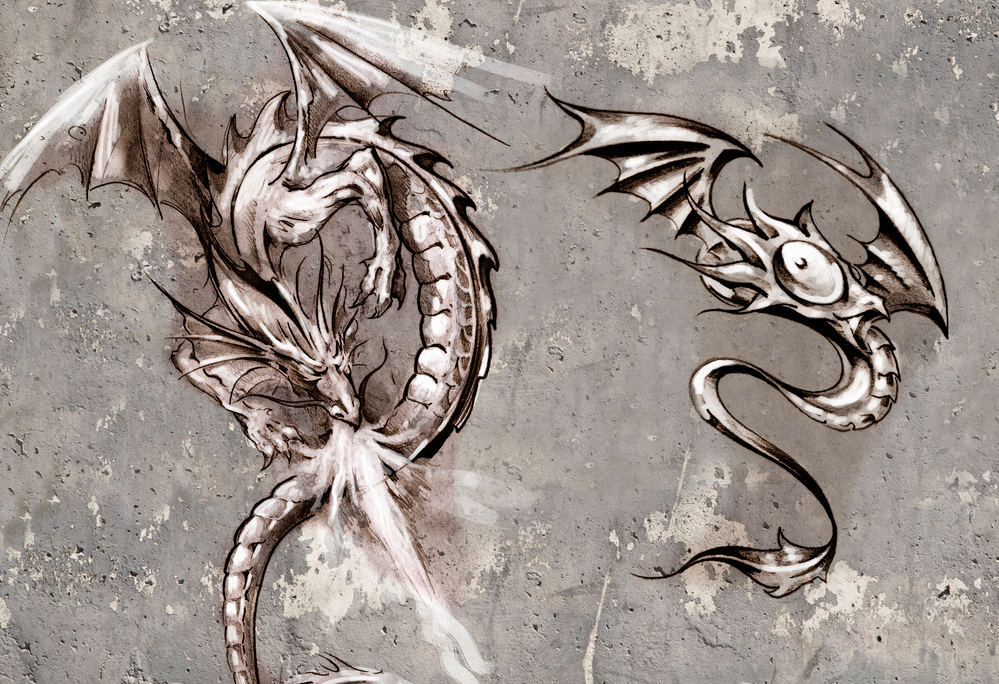
2. Cultural Significance
Almost in every culture around the globe, beautiful tribal tattoos were used as a powerful way to show who they were and what they believed in.
Tattoo practices were used by people in ancient Egypt, Greece, Rome, Africa, India, and China to show their status in society, religious devotion, and personal identity.
- Tattoos were a sign of religious devotion and a way to show safety and fertility in ancient Egypt.
- The ancient Greeks used tattoos to signify their secret communities and faithfulness to the Gods.
- In Roman society, tattoos were first linked with criminals, but the practice spread to include soldiers recognizing their victories in battle over time.
- In Chinese tribal cultures, tattoos were believed to possess spiritual and protective qualities. They were often seen as spiritual armor, defending against evil spirits and bringing good fortune.
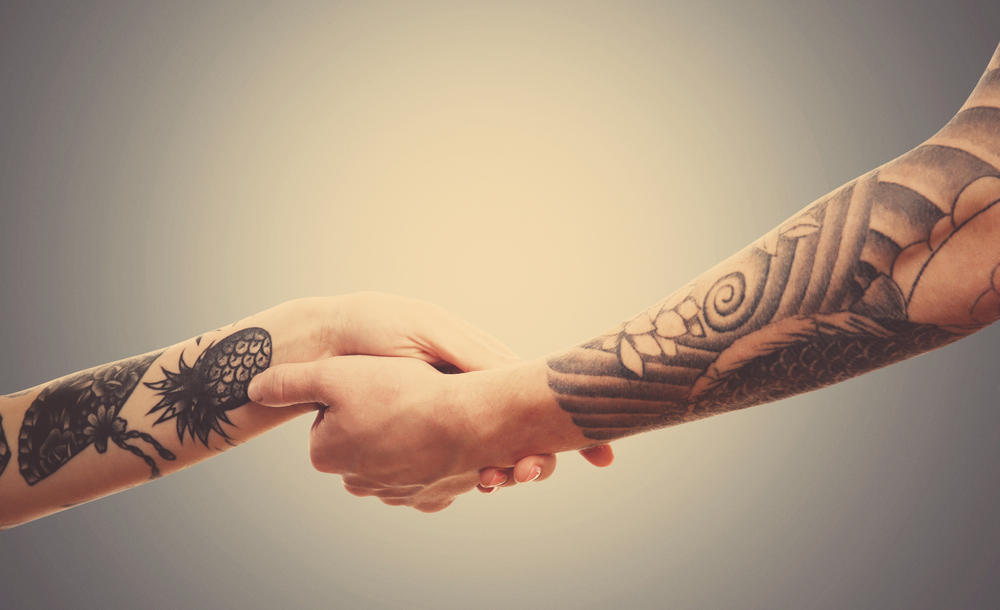
Tattoos allowed many cultures to show what was important to them and who they were.
Every tribal tattoo has a different meaning and significance that became part of their culture and rituals.
Let’s talk about rituals so we may discover more about the roots of tribal tattoos.
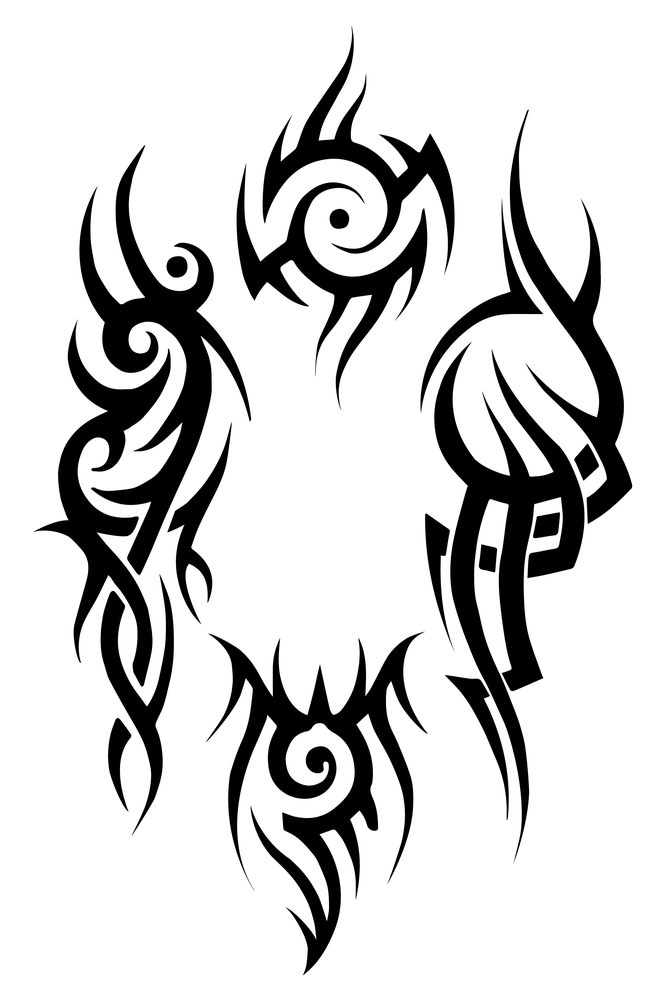
3. Rituals and Rites of Passage
In many ancient societies, tattoos were very important rituals. They were often a part of rites of passage, religious events, becoming an adult, or joining a certain group of people like secret societies.
Tattooing was sometimes seen as a holy act that could only be done by skilled people in the community, like priests or shamans.
In Polynesia, for example, tattooing rituals were complex and with spiritual meanings. People saw the process as a spiritual journey that linked them to their ancestors and spiritual realms. In these societies, getting a tattoo was a life-changing event that marked the beginning of a new phase of life.
Symbolism and Meanings of Tribal Tattoos
What is the most appealing aspect of tribal tattoos? What do you think?
Their unique patterns and attention to detail with bold lines, dots, and figures…right?
These elements make tribal tattoos different and beautiful. Every civilization has its beliefs and patterns, making it unique and fascinating. Let’s look at the symbols and see what they imply.
1. Connection to Nature
Animal and nature designs are often used in tribal tattoos to show the link between the person and the natural world.
Such as, in African tribal tattoo patterns,
- Animals like elephants, which stand for power and strength, are often used.
- Flowers stand for health and beauty.
- Sun motifs and bold zigzag lines are also popular in African tribal tattoos.
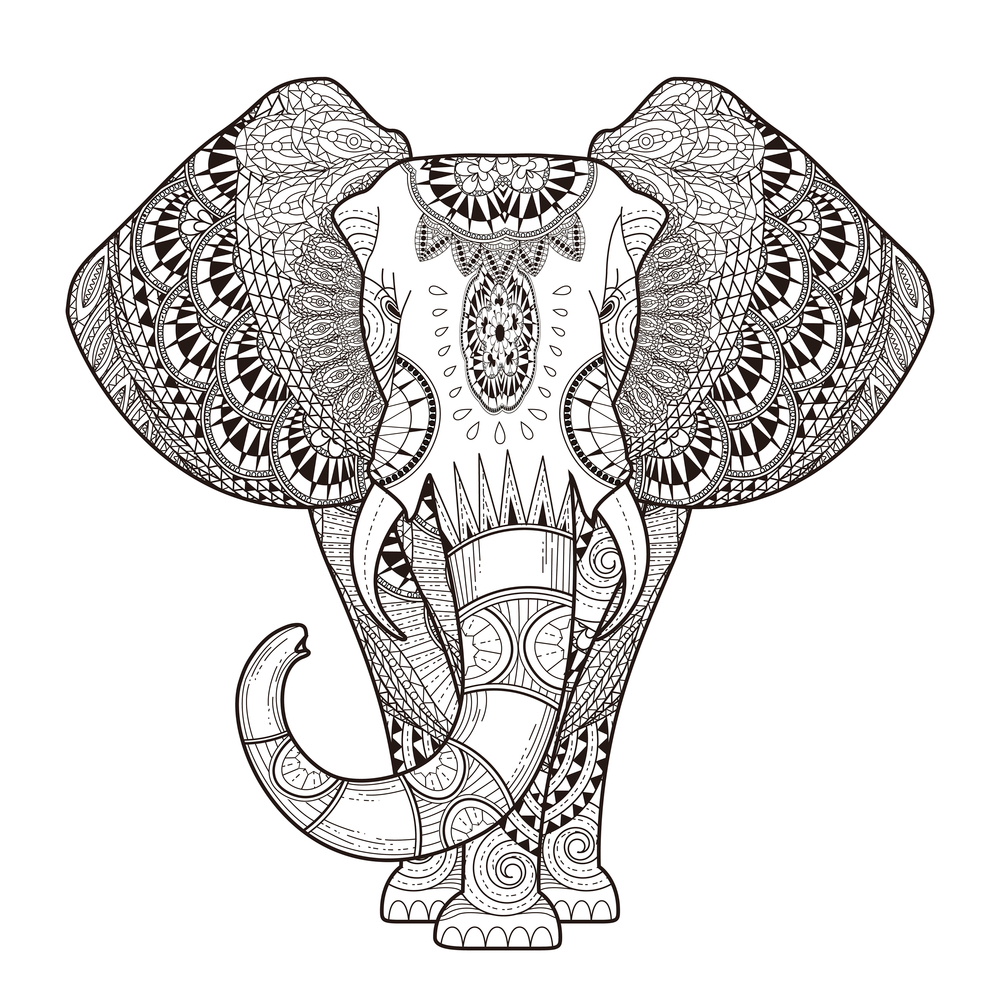
2. Spiritual and Mystical Symbolism
Another important aspect of tribal tattoos is Spiritualism. Tribal societies value religious and mythological tattoos. They pray to gods, deities, and spirits through symbols.
Not to mention, tribal tattoos show respect for ancestors, spirit guides, totem animals, elemental forces, and protection symbols.
Tribal tattoos use these symbols to express personal faith and connect the wearer to the holy and sacred worlds. They also carry deep-rooted tribal beliefs and spiritual traditions.
3. Cultural Identity and Heritage
Tribal tattoos are often used to show being a member of a tribe and social status within a community. It also shows that someone is part of a certain tribe or social group and how close they are to their cultural roots.
Tribal tattoos also keep cultural traditions alive and praise them. They are visual representations of ancestors’ knowledge, stories, and values.
Tattoos’ major goal is to keep traditions and beliefs alive. People pass their knowledge and customs to future generations through visual art such as tattoos.
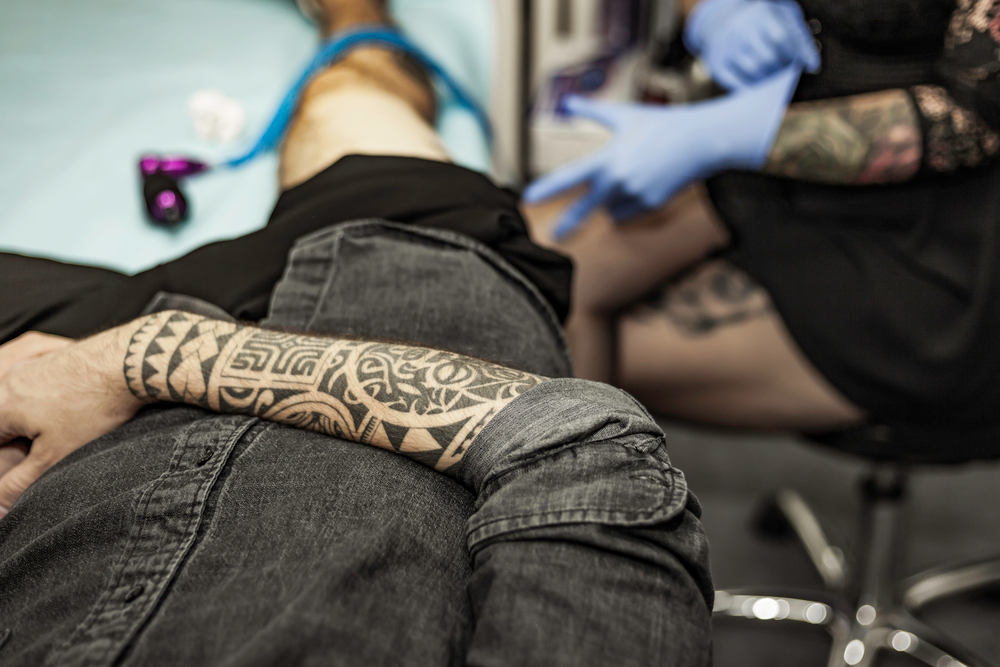
4. Personal and Life Journey
Personal stories and experiences can be shown through tattoos.
These symbols may signify accomplishments, challenges, or personal growth. They can also remind of the person’s journey and the lessons learned.
Putting these symbols into a tattoo design can act as a reminder of the individual’s spiritual and religious beliefs, like having a tattoo of god or a religious symbol like “OM”
5. Strength and Power
To put it differently, one of the main themes behind many tribal tattoos is strength, bravery, and power.
These tattoos show the wearer’s inner power, and bravery, specifically in wars. Warriors used to wear these tattoos with pride because they symbolized physical and mental strength.
For instance,
- The lion is frequently connected with bravery, leadership, and authority.
- Whereas the bear is associated with strength, protection, and resilience.
- Other creatures, such as the eagle, wolf, or tiger, were frequently used to represent strength and power.
In the end, tribal tattoos can have a lot of different meanings and symbols based on the design and the symbols used.
By knowing what these tattoos mean on a deeper level, you can choose a design from these regional variations which fits your journey and values.
Regional Variations in Tribal Tattoos
Each part of the world has a different way of looking at body art. We can learn more about the cultural identities and rich histories these tattoos represent by looking into the meanings and symbols specific to each area.
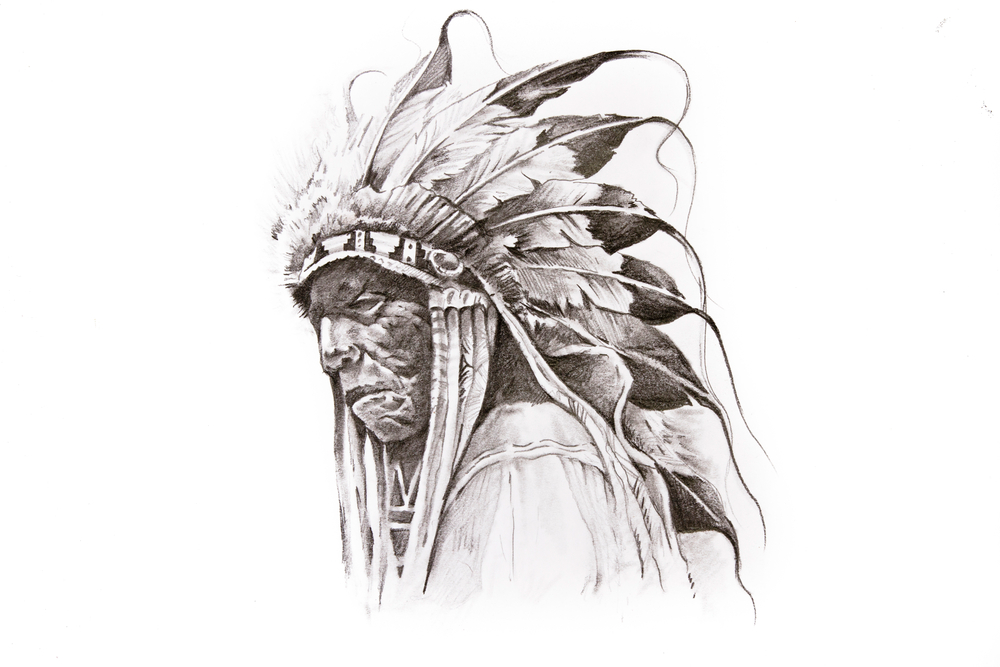
1. Native American Tribal Tattoos
Native American societies have had tattoos for thousands of years. It was done for various reasons, like showing cultural identity, spiritual protection, rites of passage, and, most importantly, letting people express themselves with these wonderful ink patterns.
Different groups had different ways and tools for tattooing. In the past, sharpened bone or cactus spines were used to make punctures in the skin, and natural dyes made from plant extracts or ash were used to color the Native American tribal tattoos. Some groups put the ink on by tapping it on with their hands, while others used thread and needles.
Animals like eagles, bears, and wolves were used as totems. These animals stood for things like strength, wisdom, and security. Sacred geometric shapes, such as spirals and circles, had spiritual meaning and showed how everything in the world is connected.
2. Hawaiian Tribal Tattoos
The tattooing, known as “kakau” in Hawaiian, has been practiced in Hawaii for centuries. Traditional Hawaiian tribal tattoos were created using sharpened bone or natural instruments like combs to tap ink into the skin. The ink was made from natural pigments derived from plants and other organic materials.
These designs often incorporate geometric shapes, lines, and nature-inspired elements such as waves, turtles, and fish. Each symbol and pattern carries its significance, representing qualities such as strength, protection, or spirituality.
In Hawaiian society, tribal tattoos are closely linked to the idea of mana, which is a spiritual power or energy. Henceforth, they are believed to represent one’s identity and serve as a medium for connecting with ancestral spirits and the divine.
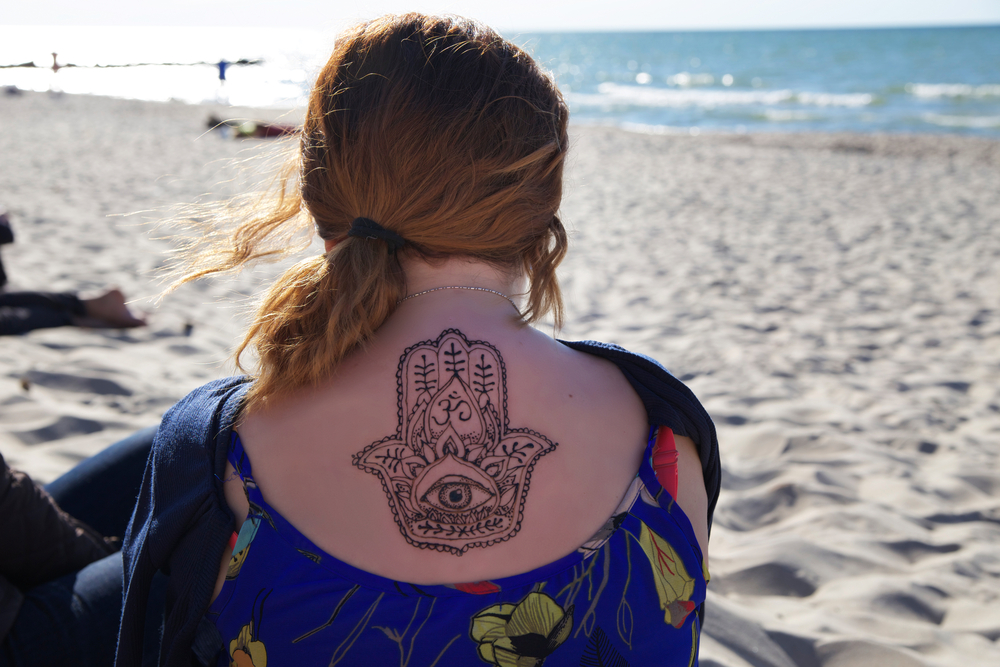
3. Indian Tribal Tattoos
Indian tribal tattoos display various tattooing traditions from indigenous communities and tribes across the Indian subcontinent. These tattoos have deep cultural roots and profound symbolic implications, representing the country’s unique cultural background.
Here are some elements and features commonly found in Indian tribal tattoos:
- Geometric motifs such as circles, squares, triangles, and lines are frequently used in Indian tribal tattoos. These designs reflect balance, harmony, and cosmic order.
- The elephant is associated with strength, wisdom, and prosperity, whereas the lion is associated with courage, power, and leadership.
- India’s numerous religious traditions influence tribal tattoos. Symbols from Hinduism, Buddhism, Sikhism, and other indigenous religions can be used. For example, the Om symbol, the lotus flower, or numerous gods like Shiva and Kali may appear prominently in the tattoo design, implying spiritual beliefs and practices.
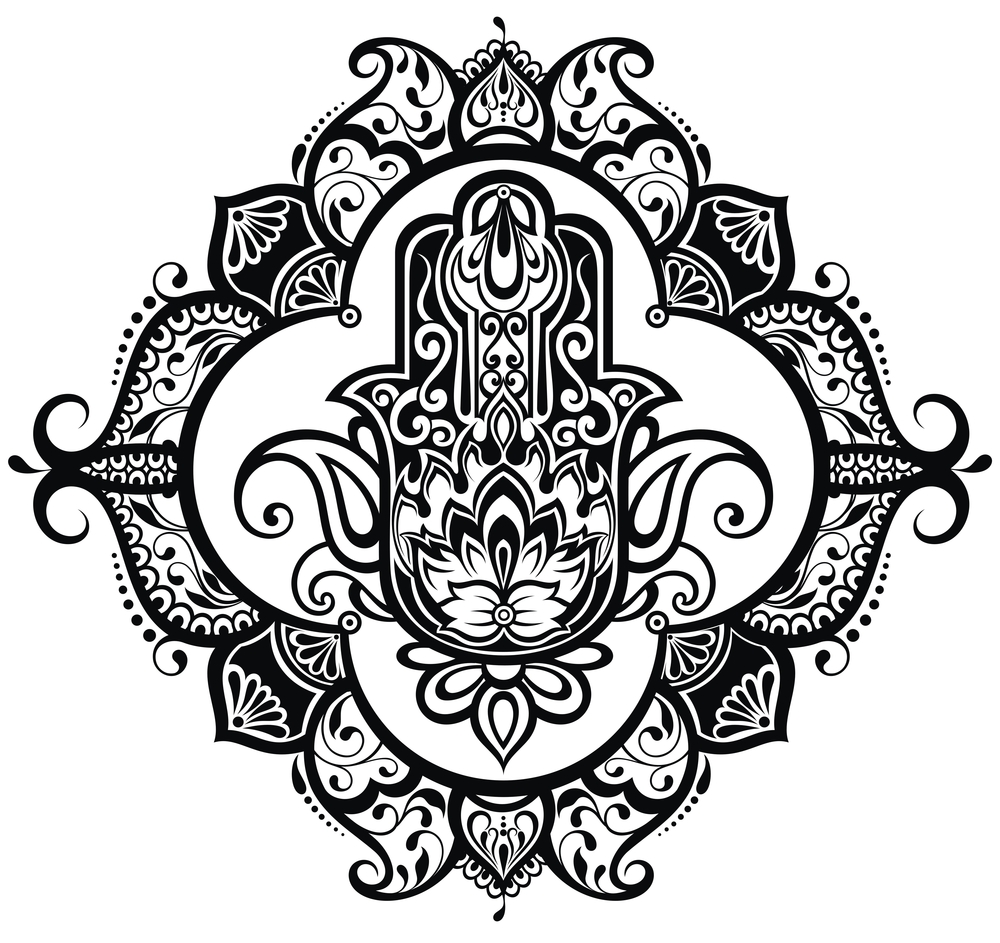
4. Polynesian Tribal Tattoos
A Polynesian tribal tattoo originating from the Polynesian islands, including Samoa, Maori, Tahiti, and Hawaii, holds a rich heritage that reflects the Polynesian people’s spiritual beliefs, traditions, and cultural identity.
Polynesian tribal tattoos, often referred to as “tatau” or “ta moko,” have been practiced for centuries and are deeply rooted in the cultural fabric of Polynesian societies.
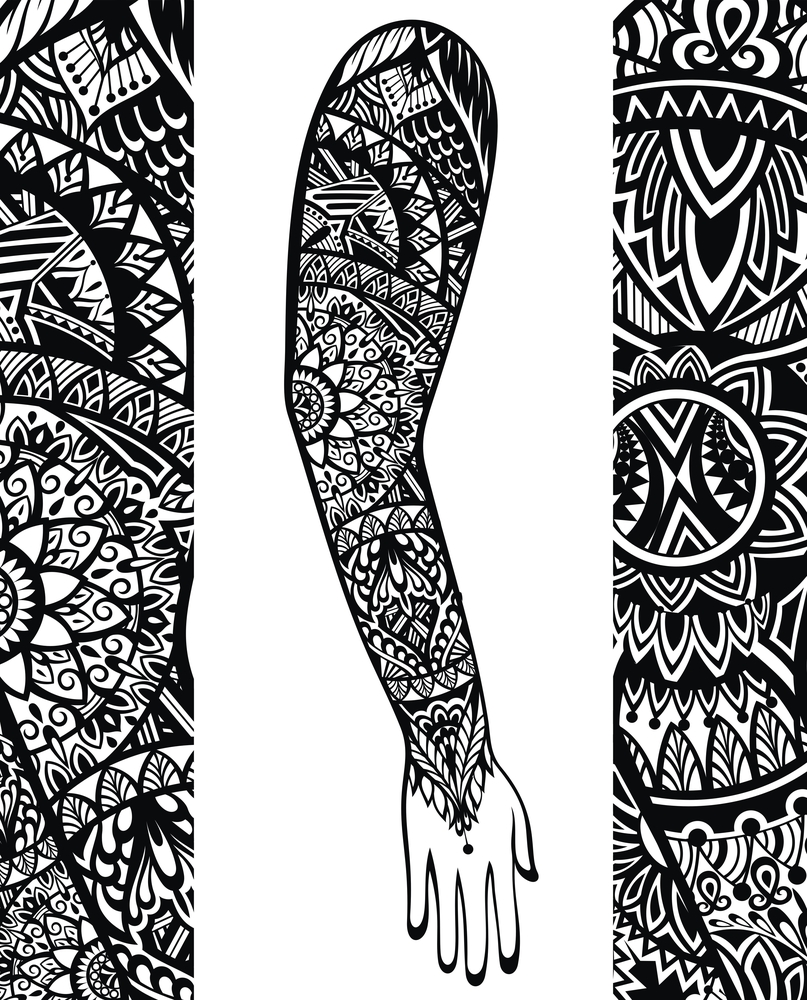
The motifs and symbols used in Polynesian tattoos carry significant meanings. For example:
- Enata (human figures) symbolize ancestors and guardianship.
- Marquesan crosses represent balance, harmony, and protection.
- Sun and ocean waves signify life’s energy, continuity, and the cycle of nature.
- Turtles embody longevity, fertility, and navigation skills.
- Spearheads represent warrior spirit, courage, and protection.
Traditional Polynesian tattooing techniques utilize manual tools such as bone or wood combs, often accompanied by chants and rituals to invoke spiritual connection and protection.
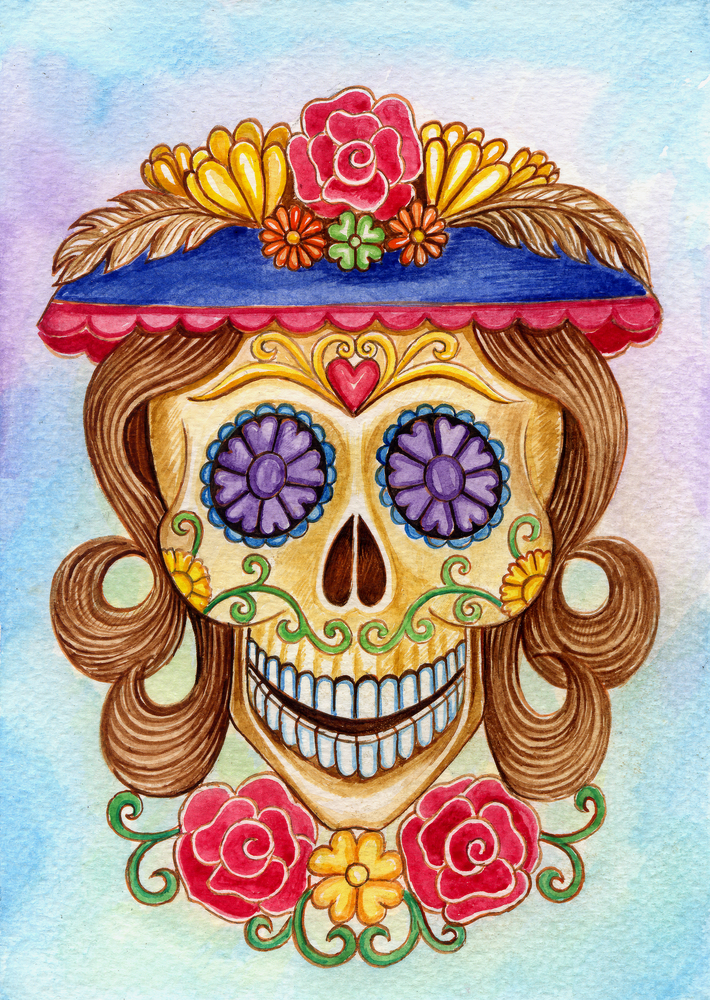
5. Mexican tribal tattoos
Mexican tribal tattoos are usually inspired by the ancient civilizations of the Aztecs and Maya, who used tattoos to represent their status, achievements, and beliefs with deep personal meaning. Aztec tribal tattoos often feature animal imagery, such as snakes, jaguars, eagles, geometric patterns, symbols, and gods. They are typically done in black or gray ink, with much shading and detail.
Some of the common symbols used in Aztec tribal tattoos are:
- The Sun: In Mexican culture, the sun is the highest symbol in the Aztec tribal tattoo. It symbolizes power, sacrifice, the passage of time, and life cycles.
- Skeleton: It is associated with rebirth, change, and Death.
- Eagle: In Mexican mythology, eagles were divine animals. They represent power, bravery, and majesty. They were also linked to Huitzilopochtli, the sun god, and the warrior class.
- Warrior: Warriors were considered in great regard in Mexican society. They represent bravery, honor, and glory.

6. Filipino tribal tattoos
Filipino tribal tattoos, commonly known as “batok” or “pambabatok,” have a rich cultural legacy rooted in the Philippines’ ancient customs.
Tattooing has a long history in the Philippines, dating back to ancient times. The batok practice was prevalent among indigenous tribes, such as the Kalinga, Butbut, Bontoc, and Visayan peoples. These tribal tattoos were traditionally applied using a tapping method, utilizing thorns, bamboo sticks, or metal implements.
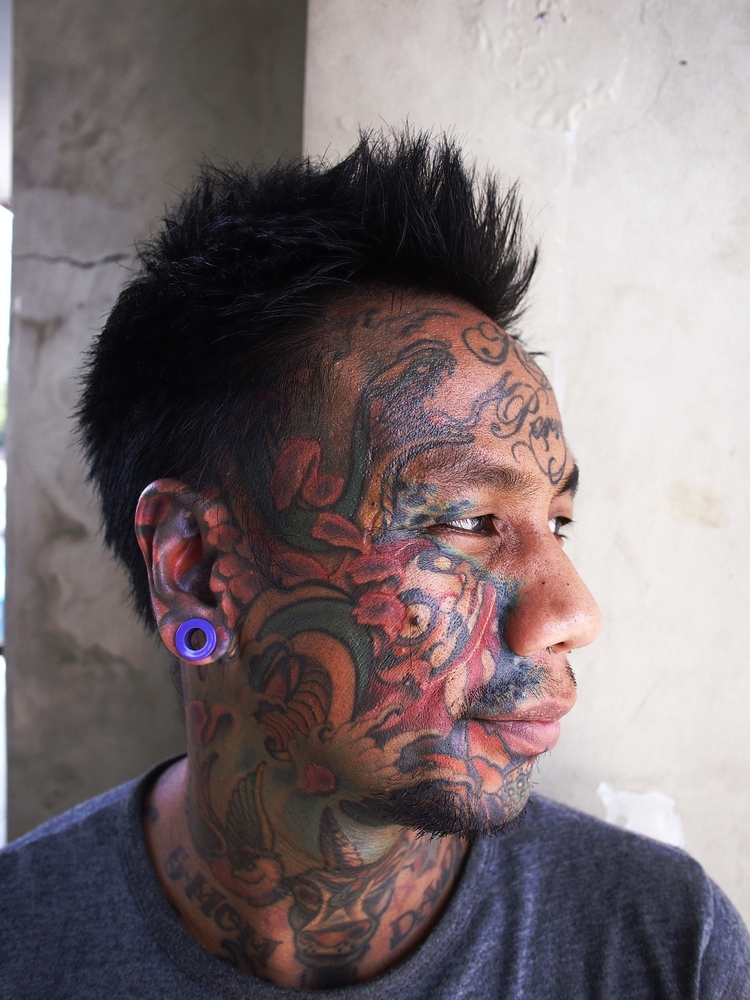
7. Samoan Tribal Tattoos
Samoan tribal tattoos, known as “tatau,” are renowned for their bold and intricate designs,
Traditionally, the process of getting a Samoan tribal tattoo was a sacred ritual that involved skilled tattoo artists, known as “tufuga ta tatau.” These artists were highly respected and held specialized knowledge and expertise in traditional tattooing techniques.
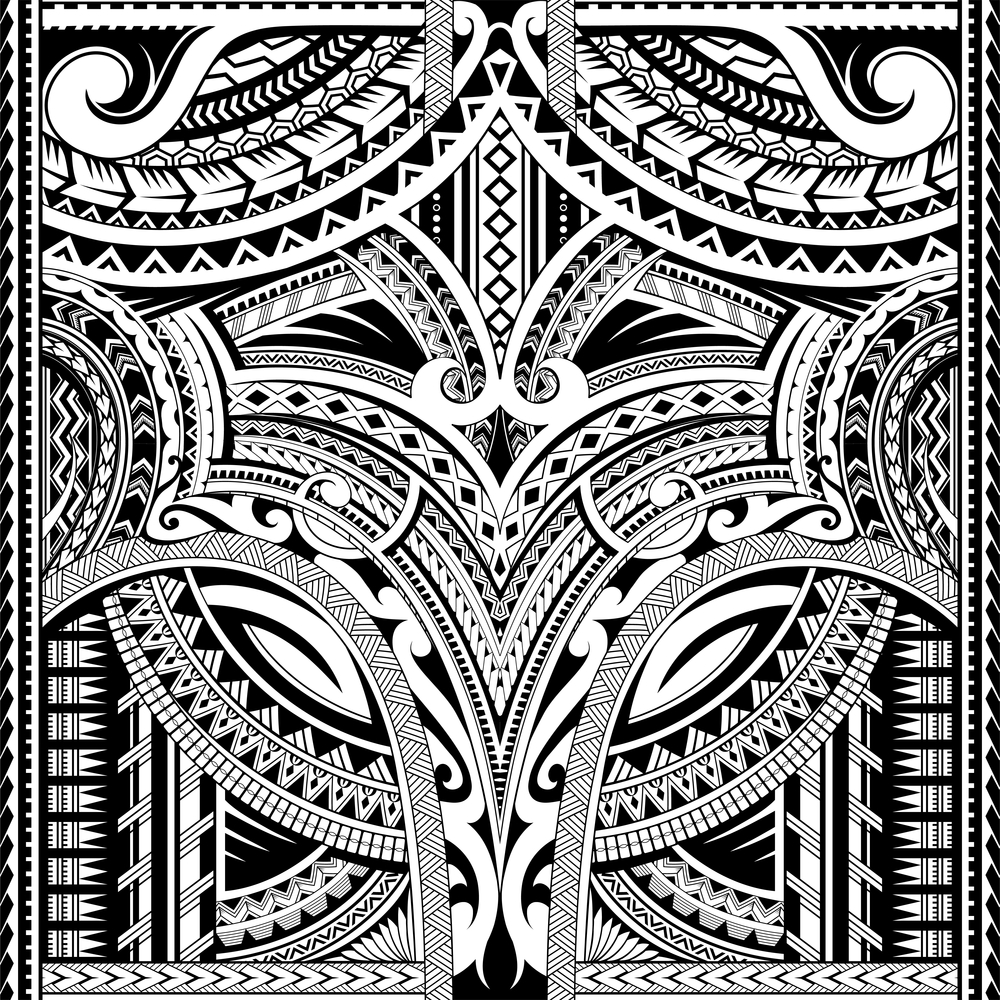
Some common elements found in Samoan tribal tattoos include:
- Pe’a (Male Tattoo): The pe’a is a traditional male tattoo covering the waist to the knees. It consists of intricate patterns and symbols representing masculinity, strength, and cultural identity. The pe’a signifies a rite of passage earned through endurance and pain.
- Malu (Female Tattoo): The malu is the female counterpart to the pe’a and covers the thighs. It is a symbol of femininity, cultural pride, and protection. It often incorporates motifs inspired by nature, such as shells and waves, representing the connection to the ocean and the nurturing aspects of women.
- Turtles: Turtles are a prominent motif in Samoan tattoos. They symbolize longevity, wisdom, and protection. The turtle is considered a guardian spirit that guides and protects the wearer throughout their journey in life.
Samoan tribal tattoos are deeply rooted in cultural traditions and are a source of pride, identity, and connection to Samoan heritage. They carry ancestral narratives, transmit cultural knowledge, and serve as a visual language communicating the wearer’s personal and cultural stories.
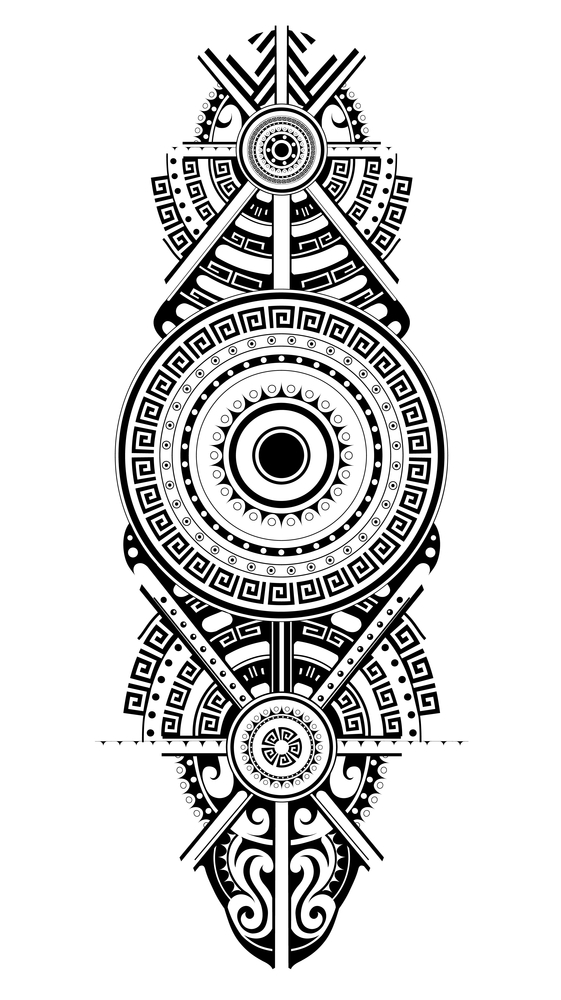
8. Maori Tribal Tattoos
Maori tribal tattoos, or “ta moko,” are body art that originated with New Zealand’s indigenous Maori people. Ta moko is deeply symbolic of the wearer’s identity, heritage, social standing, and life journey.
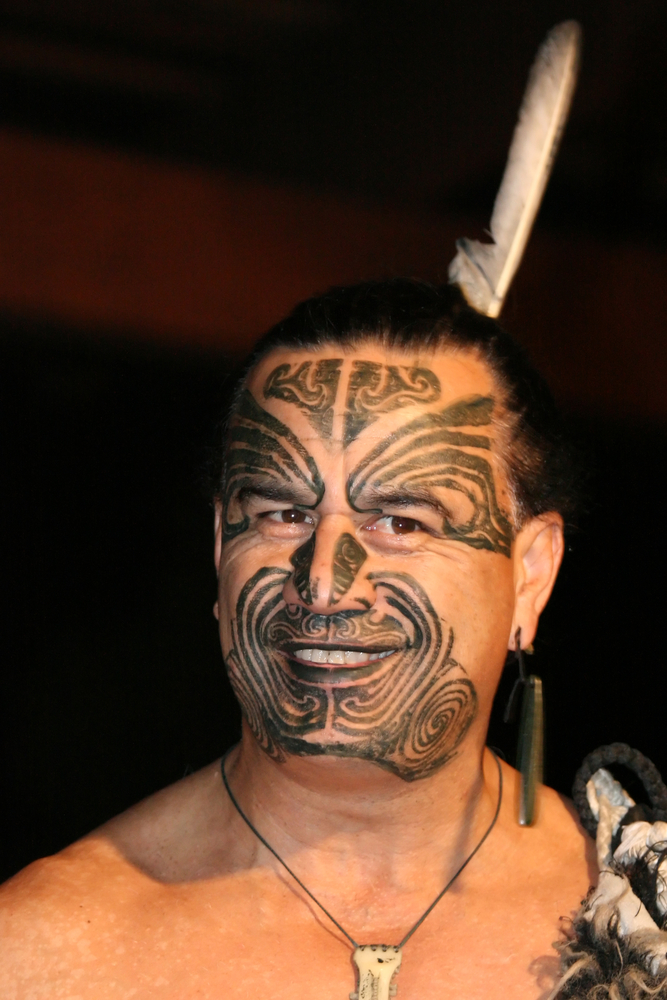
Maori tattoos are hand-tapped into the skin with chisels known as “uhi.” The procedure is complicated and painful, demanding the skills of a proficient tattoo artist known as a “tohunga ta moko.”
Maori tattoos often include spirals, curves, and flowing lines. These elements represent life’s connection, existence’s cyclical nature, and the perpetual flow of energy.
9. Celtic Tribal Tattoos
Celtic tribal tattoos are a particular type of body art inspired by Europe’s historic Celtic cultures. These tattoos are identified by intricate knotwork, spirals, and intertwined designs that reflect the Celtic people’s rich artistic heritage and symbolic meanings.
Celtic tribal tattoos stand out by their use of knotwork. These interlacing designs represent the interdependence of life and eternity. The Celtic knot, Trinity knot, and endless knot are all popular knotwork designs. Each knot represents something different, such as the life cycle, body, mind, spirit union, or the eternal link between love and friendship.
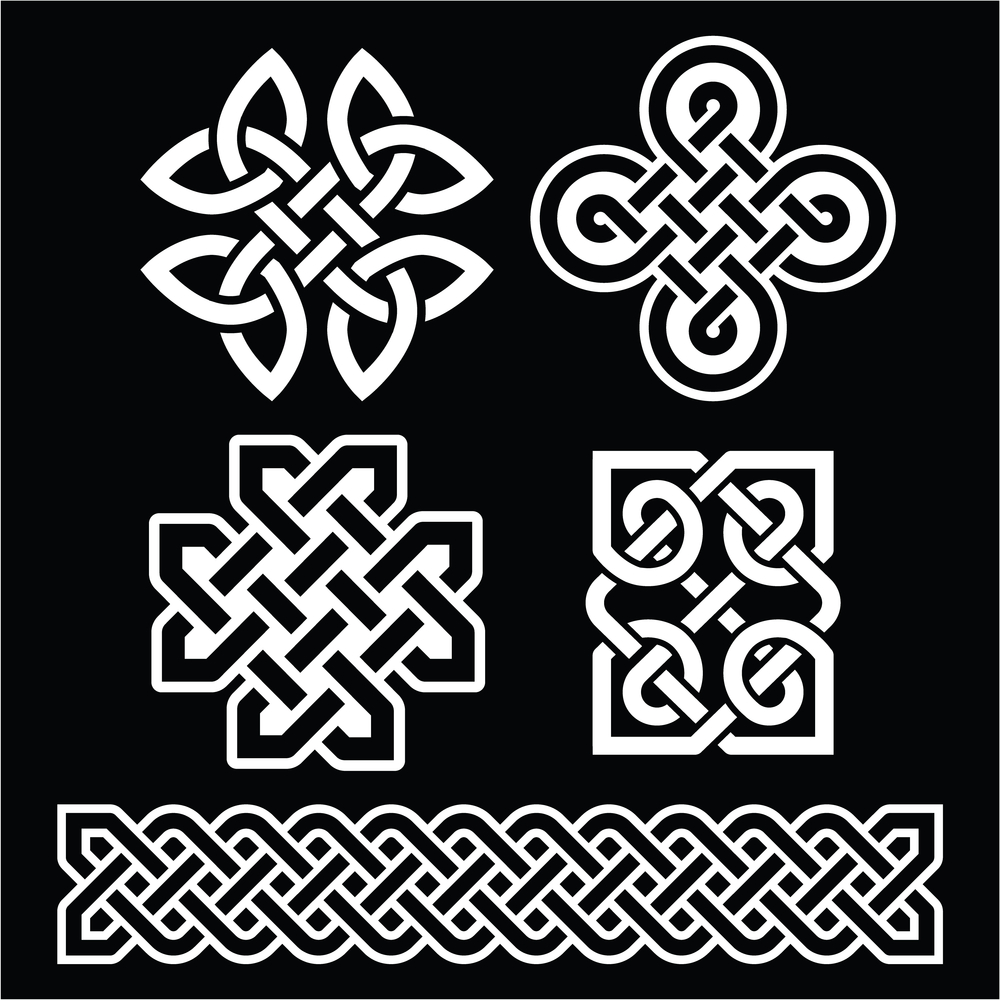
10. Cherokee Tribal Tattoos
Cherokee tribal tattoos are body art inspired by the Cherokee Nation’s cultural heritage and traditions as people of the southeastern United States. Some key features of Cherokee tribal tattoos include:
- The sacred fire, the seven-pointed star, represents the seven Cherokee clans.
- The arrow stands for protection and defense.
- The sun represents life and vitality.
- Animals such as the bear represent power and wisdom.
- The eagle represents spirituality and freedom.
- The wolf represents loyalty and family.
Now you better understand what tribal tattoos are and what they mean. With the designs and patterns we’ve discussed, you can get a cool tribal tattoo that is unique and beautiful. Make sure you don’t mess up by following these steps.
How to Select Tribal Tattoos in 6 Easy Steps
When considering getting a modern tribal tattoo, it’s important to remember a few things, like respecting traditional norms and finding a skilled artist. In this part, we’ll show you how to choose the right tribal tattoo.
1. Research Different Tribal Style Tattoo
Tribal tattooing includes images from many different cultures and art styles, such as Polynesian, Maori, Native American, African, and Celtic.
Start by looking into these different styles to find out where they came from, what they mean, and how they look. This will help you figure out which styles work best for you.
2. Consider Cultural Appropriation
Tribal tattoos often have important cultural and spiritual meanings for those who get them. It’s important to be culturally aware and respectful when dealing with tribal tattoos.
Avoid using sacred symbols or designs from another culture unless you have a strong connection or knowledge of that culture.
For example, getting OM tattooed on the lower body is forbidden in Hinduism because it is a holy symbol. Try to avoid making such errors.
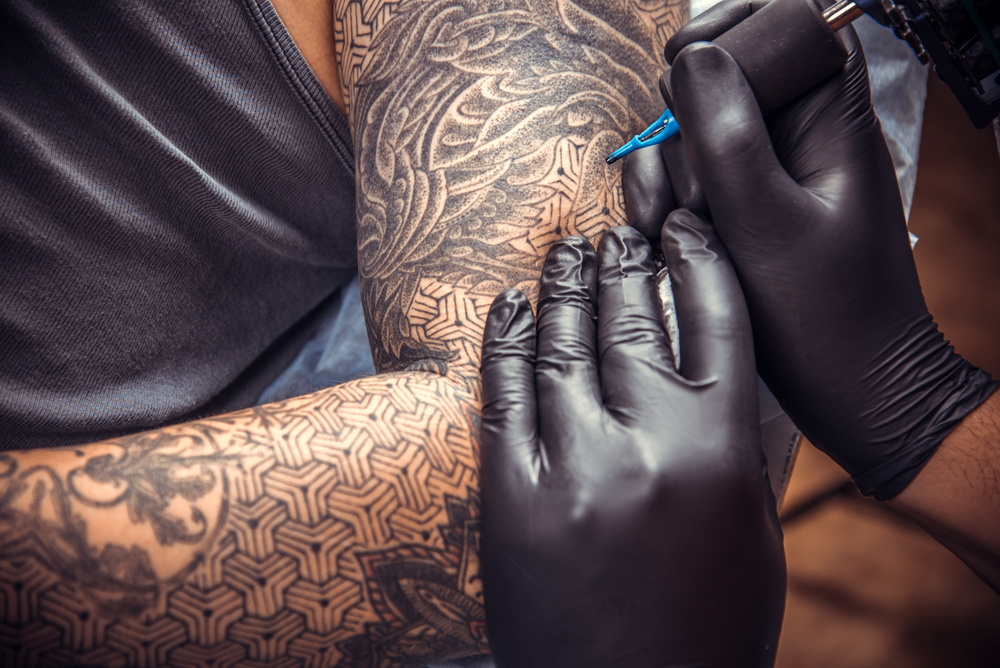
3. Customize the Design
Tribal tattoos are very flexible, so you can add personal touches or change the way traditional patterns look.
Colors and patterns can be added as desired. If you are spiritual and practice Buddhism, a lotus with a faint pink touch indicates serenity and harmony.
Make the tattoo special and important to you by making it your own, including mountains, natural wonders, or traditional dress of the culture you want to represent.
4. Placement on the Body
Think carefully about where you want your tattoo. Tribal designs often follow the body’s shape, highlighting how it moves and flows naturally.
The design’s size, shape, and placement will affect how it looks and works with your body. Consider your lifestyle, job, and goals for the future when deciding where you want to get it.
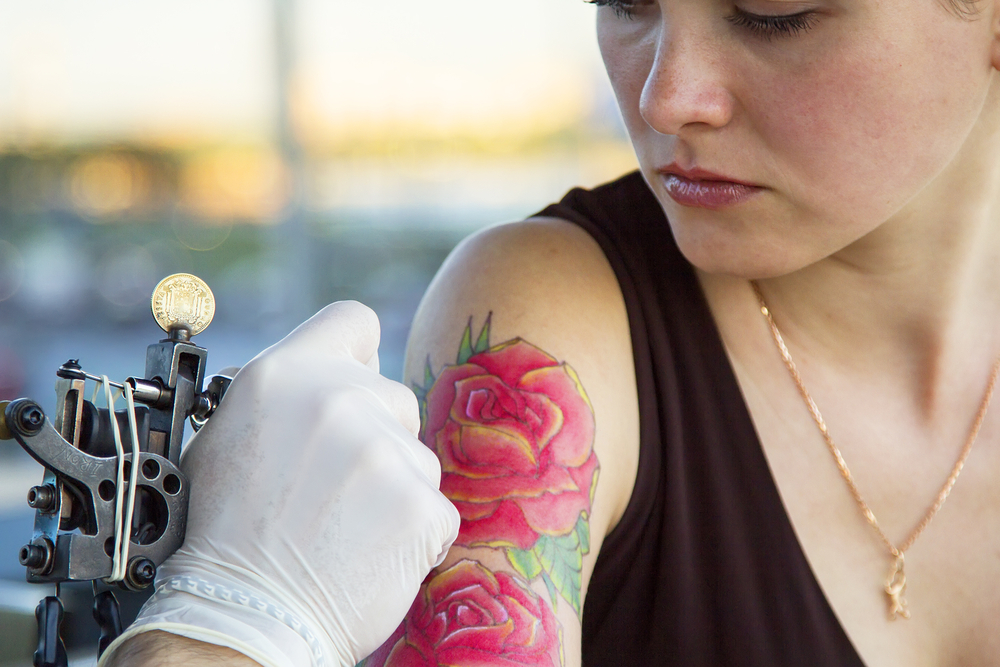
5. Find a Skilled Tattoo Artist
By all means, this is the most important part, finding a tattoo artist who specializes in modern tribal tattoos and has a lot of experience making tattoos that look real and good.
Check their work history to ensure they know much about the particular tribal style you want. Talk to the artist about your ideas and ask for their feedback on improving the design.
A professional tattoo artist can make any tattoo vibrant and charismatic with expertise and talent.
6. Review and Reflect
Before getting the tattoo, consider the pattern, meaning, and where it will go. Ensure what it means to you and that you are okay with it. It is important to realize that permanent tattoos will be with you forever.
Get feedback from friends or family members you trust to get more points of view.
Remember that getting a tribal tattoo is a personal journey, and it’s important to spend time studying, thinking, and working closely with a skilled tattoo artist to develop a design that shows who you are and honors the cultural roots of tribal art.
Final Thoughts
Tattooing dates back thousands of years. Rich in symbolism and rooted in history, tribal tattoos are significant in every culture worldwide. They serve as forms of expression, reflecting personal identity, cultural heritage, and spiritual beliefs.
From Asian culture to native American tribal culture, you will get different patterns and designs of tattoos like tribal lion tattoos, facial tattoos, shark teeth tattoos etc. Each tattoo style will tell a different story about their culture and history.
Understanding the meanings behind tribal tattoos requires respect, cultural sensitivity, and research.
We have high hopes that reading this article has opened your eyes to the beauty and significance of tribal tattoos.
Happy Tattooing!
